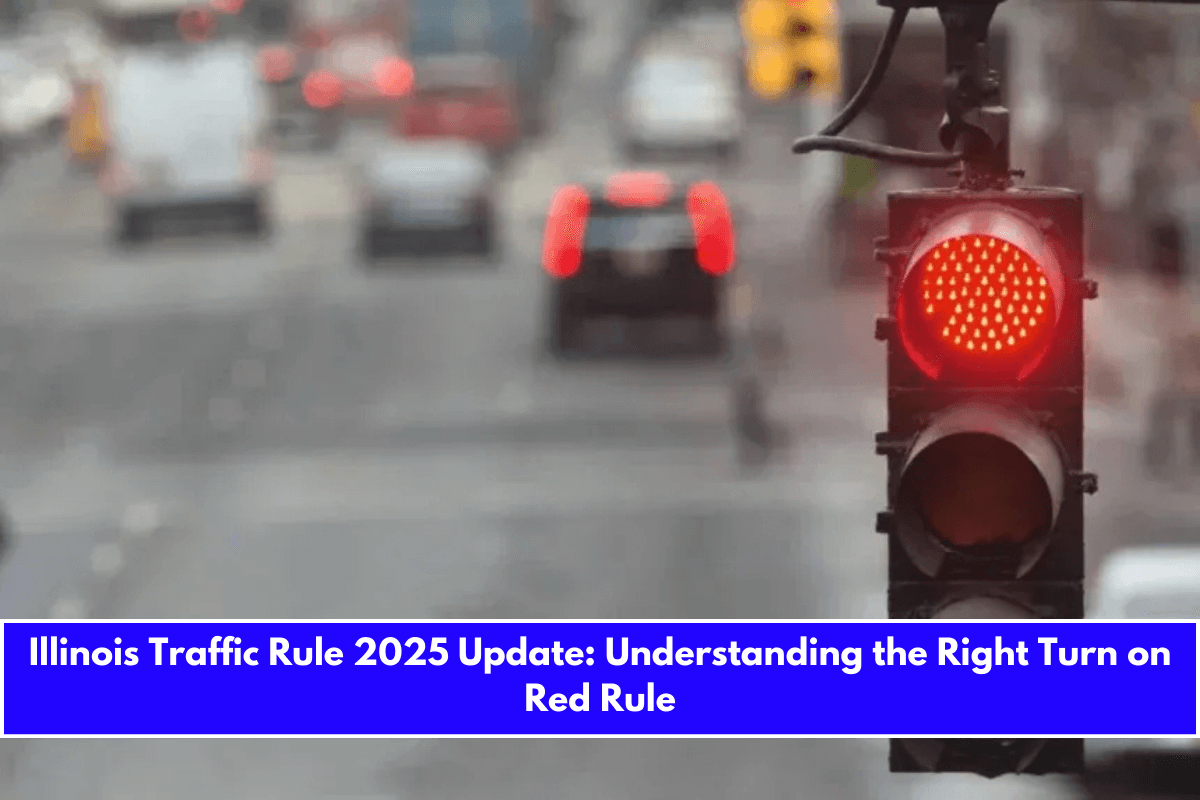In Illinois, the right turn on red (RTOR) rule remains permissible under state law as of 2025, but significant changes are under consideration due to rising pedestrian safety concerns. Here’s a detailed breakdown of current regulations and proposed updates:
Current Statewide Rules
- General Permission:
- Drivers may turn right on red after coming to a full stop unless prohibited by signage or a red arrow.
- Local municipalities can enact stricter ordinances (e.g., Chicago’s partial bans near schools or high-pedestrian zones).
- Red Arrows:
- A steady red arrow prohibits turns in the indicated direction, even if the intersection is clear.
- Local Authority:
- Cities like Chicago, Ann Arbor (MI), and Washington, D.C. (effective 2025) have restricted RTOR in specific areas to enhance pedestrian safety.
2025 Updates and Proposed Changes
- Pending Legislation:
- Illinois legislators are debating bills to prohibit RTOR near schools, parks, and transit hubs, mirroring Washington state’s 2025 ban.
- Chicago’s administration has proposed expanding RTOR restrictions citywide but has not finalized specifics.
- Safety Concerns:
- Pedestrian deaths rose to 7,500+ nationwide in 2022, with right-turning vehicles accounting for 44% of incidents in some studies.
- SUVs and trucks pose higher risks: Pedestrian fatalities are 63–89% more likely when struck by these vehicles.
Enforcement and Penalties
- Violations:
- Illegal RTOR maneuvers (e.g., ignoring signs or red arrows) can result in fines up to $200 and points on your license.
- Accidents caused by improper RTOR may lead to civil liability.
- Best Practices:
- Always stop completely before turning.
- Yield to pedestrians and cyclists, even if no signage exists.
- Watch for “No Turn on Red” signs, increasingly common in urban areas.
Future Outlook
While Illinois maintains RTOR as a default, the trend leans toward stricter regulations. Cities like Los Angeles and Denver are exploring similar bans, driven by advocacy groups and studies linking RTOR to pedestrian harm. For now, drivers should stay alert to local ordinances and anticipate evolving rules aimed at reducing traffic fatalities.
Key Takeaway: RTOR remains legal statewide but faces growing restrictions in urban areas. Prioritize yielding to vulnerable road users and watch for new signage as policies adapt to safety data.
Sources:
- https://www.linkedin.com/posts/thomas-reuland-4995024_three-new-laws-for-illinois-drivers-to-know-activity-7275937662560083968-qFXP
- https://www.ilga.gov/legislation/ilcs/fulltext.asp?DocName=062500050K11-306
- https://www.salvilaw.com/car-accident-lawyer/in-depth-analysis-of-local-traffic-laws/












